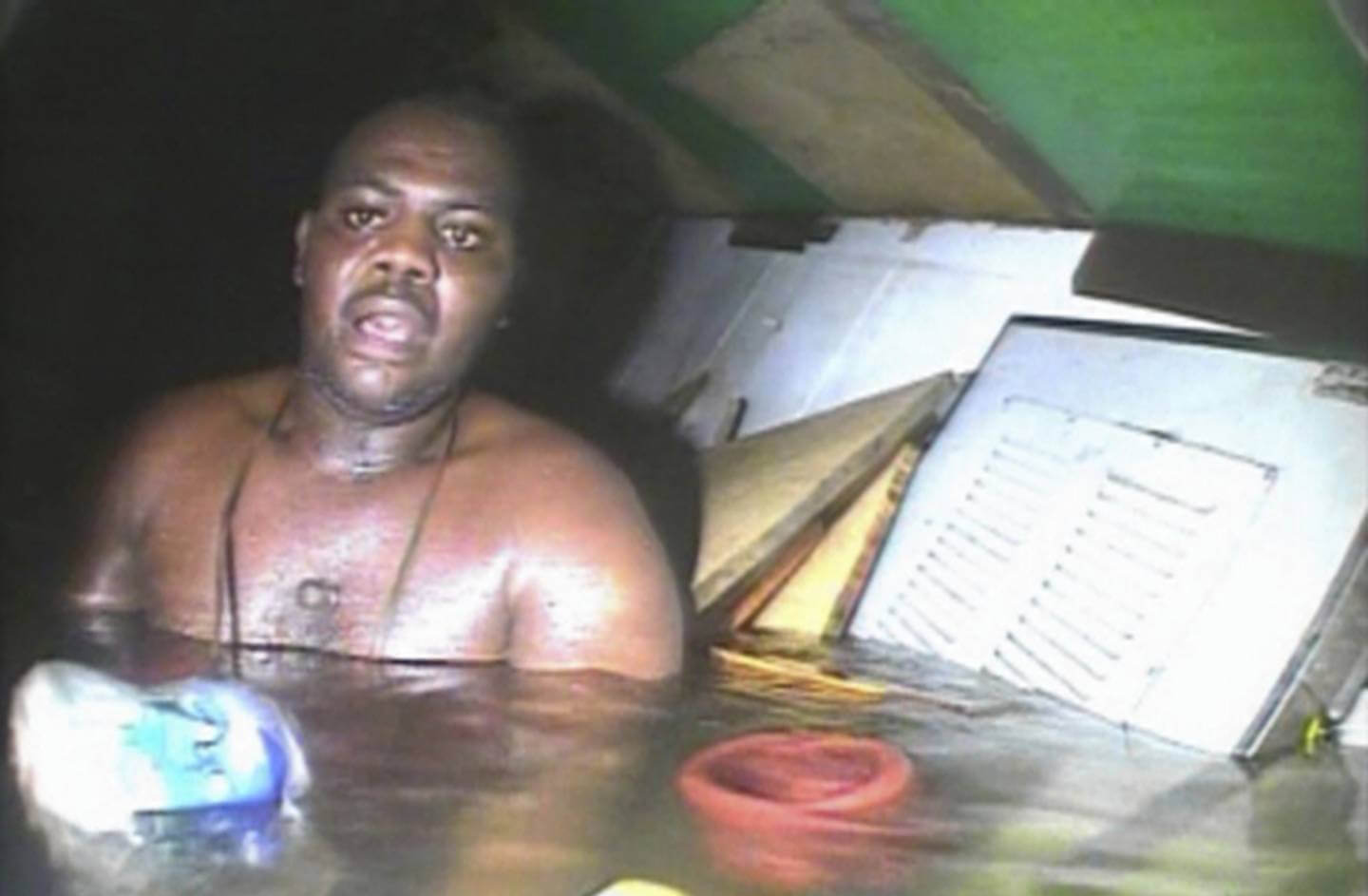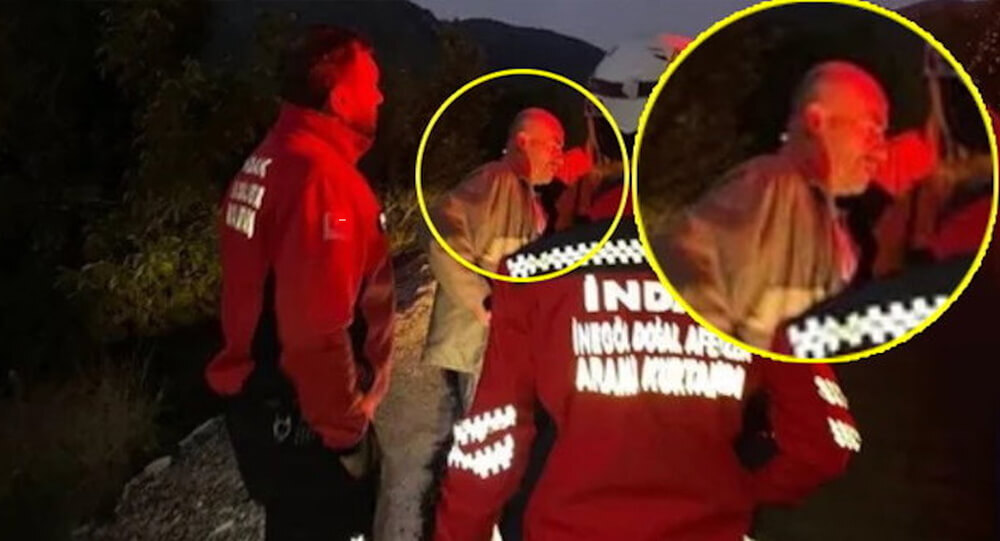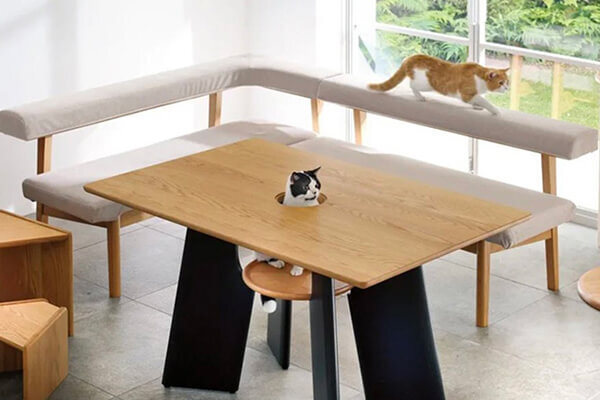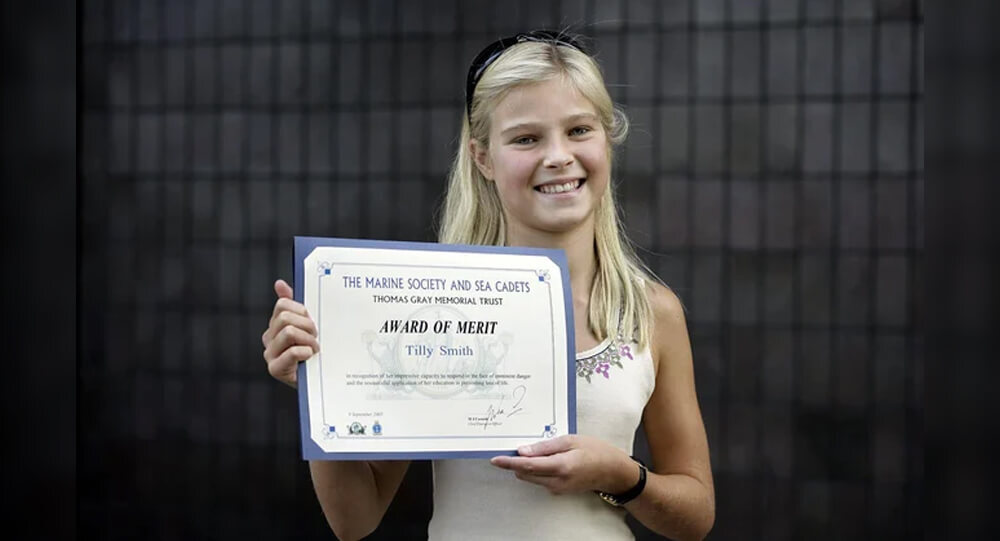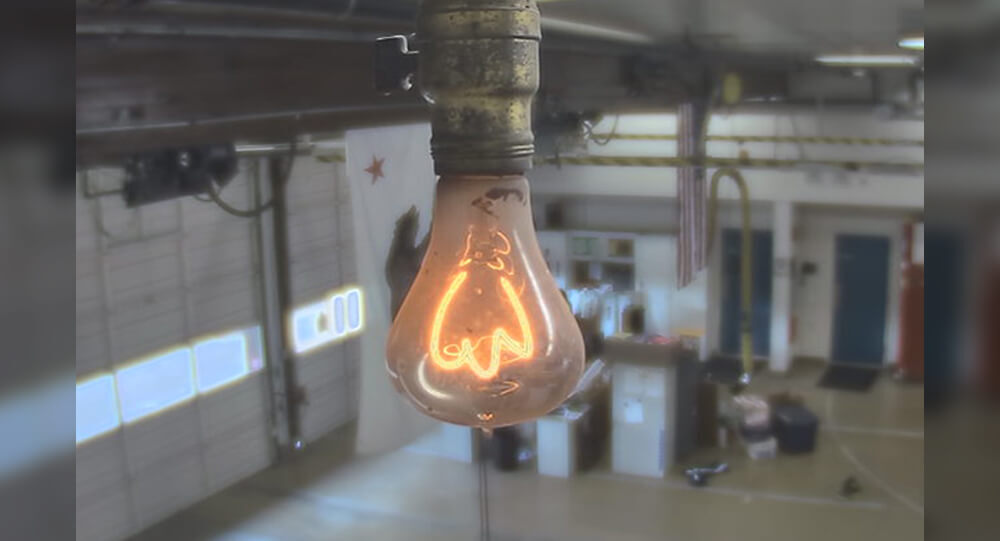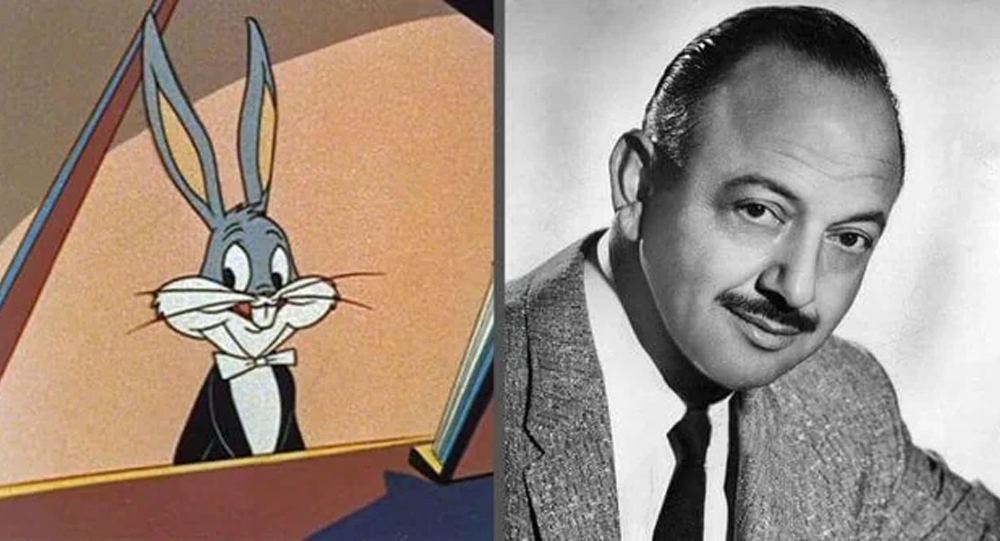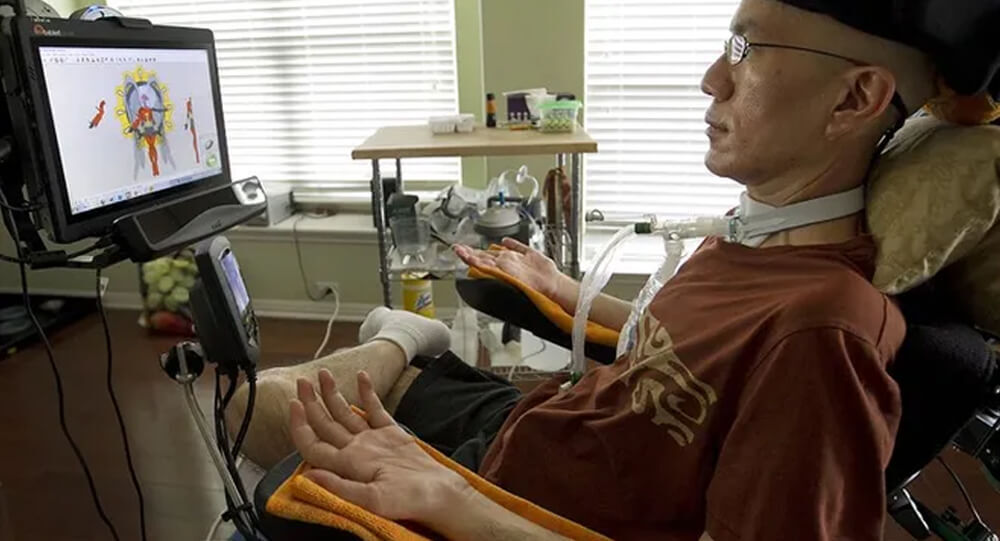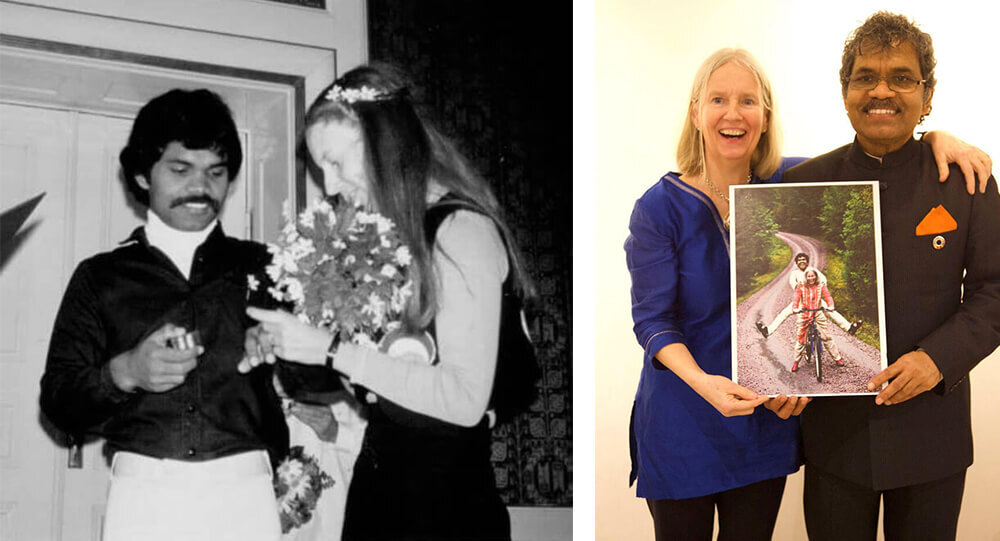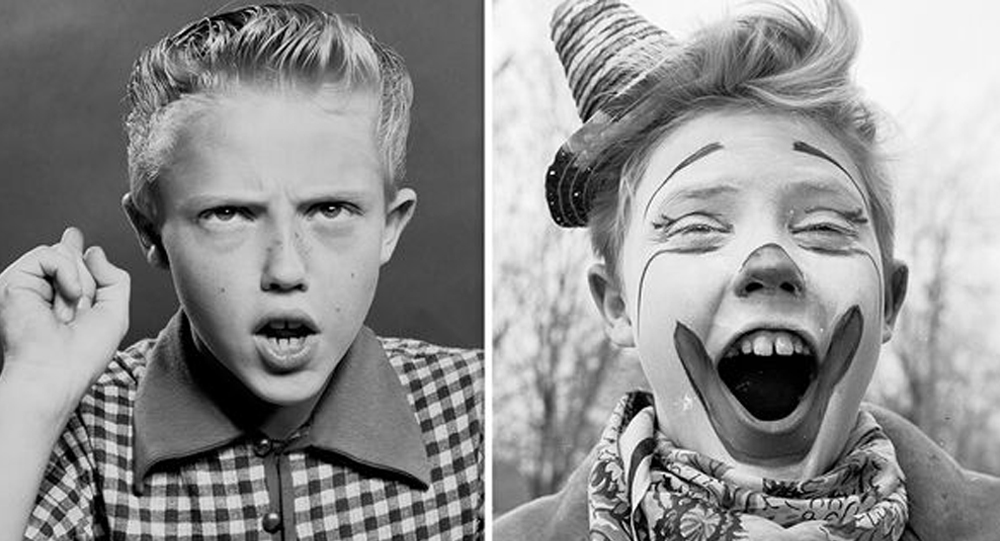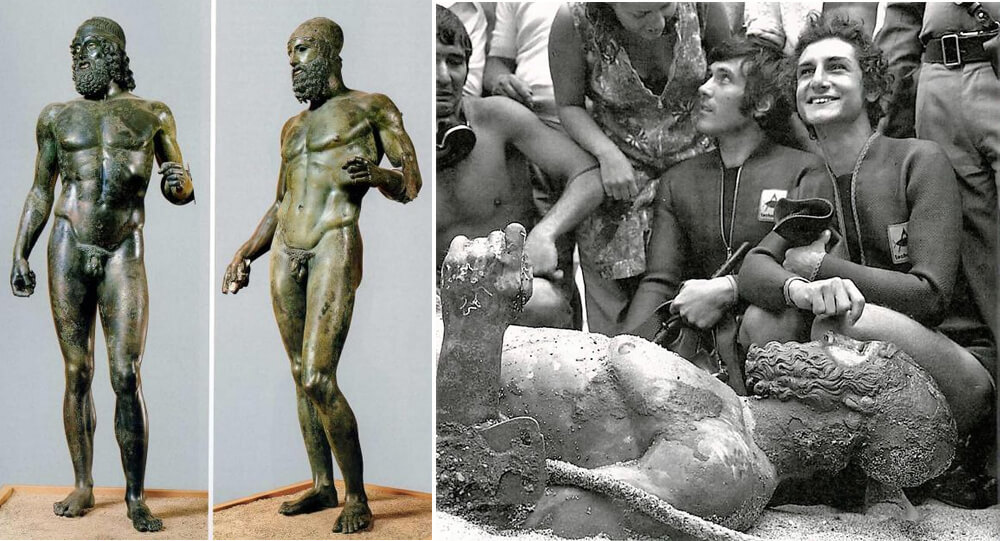
Mr. Stefano Mariottini, a novice scuba diver from Rome, made the discovery of the Bronzes of Riace while on vacation along the Calabrian coast.
They ended up being one of Italy’s most significant archeological discoveries in the previous 100 years.
The two sculptures straddle reality and myth, appearing both human and divine.
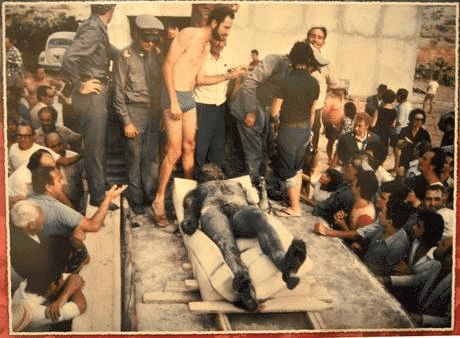
These well-known figures are shrouded in secrecy; we don’t know anything about their identity, paternity, or origins, let alone where they came from.
These art pieces are beautifully made and succeed in evoking strong emotions in the public. These are, in fact, the primary causes of the enthusiasm that the Riace bronzes have sparked.
However, some talk about “magnetic force,” “eroticism,” and “halo of fear.”
Others introduce Freud into the conversation. We will talk about this topic in great detail later.
They were first displayed in Florence, followed by Rome, and finally, as well as lastly, in the Museum of Reggio Calabria.
The Romans, after conquering Greece, stole the great artistic patrimony and moved it through a low coastal navigation, along the safer open sea roots of the Ionian coast, which may explain why there are statues in the sea depths today.
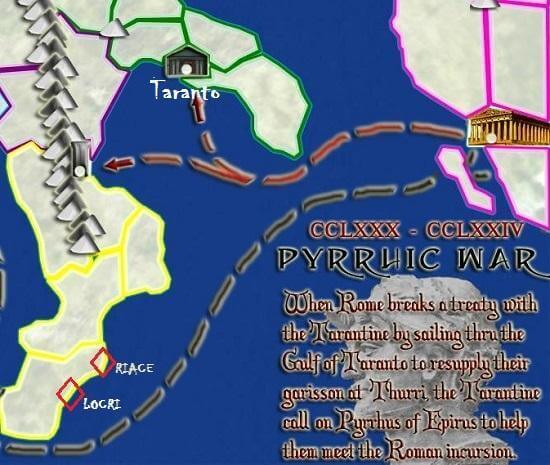
Even if the Bronzi belonged to a Great Greece town like Tarrant (Taranto-Apulia), a transportation towards Rome is objectionable. However, if we place the statues in Locri Epizephiri, it would be more difficult to comprehend why they were more than 30 km north and facing the wrong way. One theory is that the statues were removed during the theft of Locri by Pirrus, the Epirus’ king, in 275 B.C.
It is more likely that the statues were thrown overboard in order to lighten the load on the ship during a storm or to keep them out of pirates’ hands.
The statues depict two hunky men, possibly gods or warriors, who may have once wielded lances and shields.
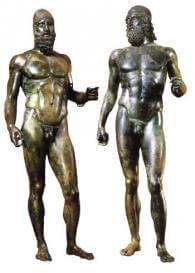
They are considerably larger than life at about two meters. The ‘older’ man, identified as Riace B, is wearing a helmet, while the ‘younger’ Riace A is wearing nothing to cover his ruffled hair.
They are both naked. Although the statues are made of bronze, they have ivory, limestone, glass, and amber paste eyes, silver lashes and teeth, copper-red lips, and copper-colored nipples.
Italian archeological treasures are well-known, but the Riace bronzes have garnered particular interest.
This is due in part to their incredibly realistic rendering and in part to the rarity of old bronze statues, as the metal tended to be melted down and reused.
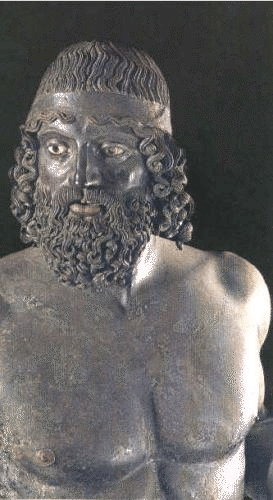
Mariottini said the bronze was so real that at first he believed he had discovered the remains of a corpse after discovering the statues 300 meters off the coast and eight meters underwater.
Millions of people visited them when they first went on display in 1981, and they were even the subject of a special postage stamp.
The statues draw about 130,000 visitors a year to the Reggio Calabria museum where they are on display. Since there were no wrecks in the area, it is unknown how or when the statues submerged to their watery resting place.
The two “champions” represented manliness in the collective public’s imagination, their “miraculous” reappearance from the waters having touched everyone’s subconscious.
While archeology is more abstract, let’s try to learn more about these two magnificent statues, which are among the few remaining authentic, antique bronze sculptures.
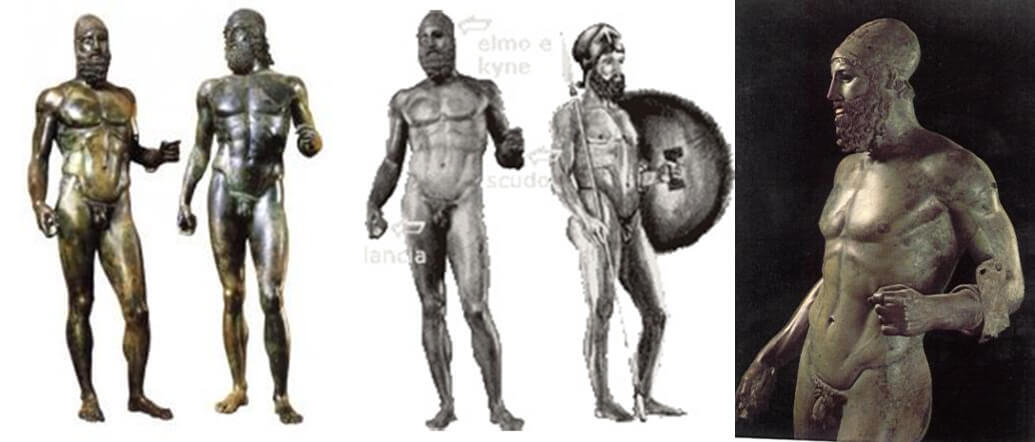
The two statues show two naked men standing erect in the same pose and are about a few centimeters apart in height.
In both instances, the left arms still show signs of a former shield; traces in the hairstyles imply that each individual once wore a helmet.
Half-closed, the right hands were holding something that couldn’t yet be positively identified.
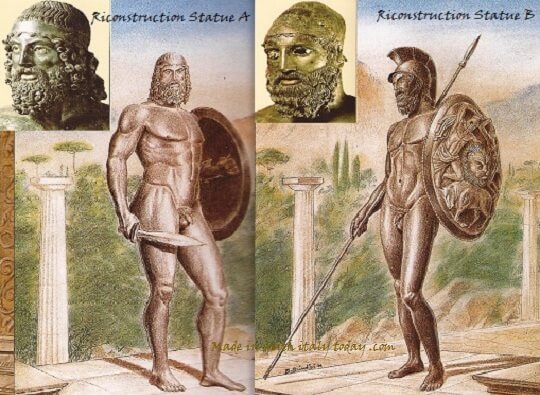
In the Bronze A, this movement does not affect the upper part of the thorax, where the pectorals and shoulders are almost horizontal, whereas in the Bronze B, it affects both the pectorals, defined by a tilted line, and on the shoulders: the right one is in a lower position than the other. As a result, the right thigh stands higher than the left one.
The two statues display a crossed rhythmic pattern in their bodies. The left arm, leaned to hold the heavy shield, corresponds with the upright right leg, which bears the weight of the body; the right arm, with the lower right arm holding the mast, corresponds with the flexed left leg, in a forward position.
In the Bronze A, the plastic vigor strengthens the strong muscles in a more geometrical and static way, whereas in the Bronze B, it does so in a more analytical and dynamic way.
The sub-skinned veins are one of the anatomically correct details that the Bronzi reproduces, and they are especially noticeable in the hands and feet.
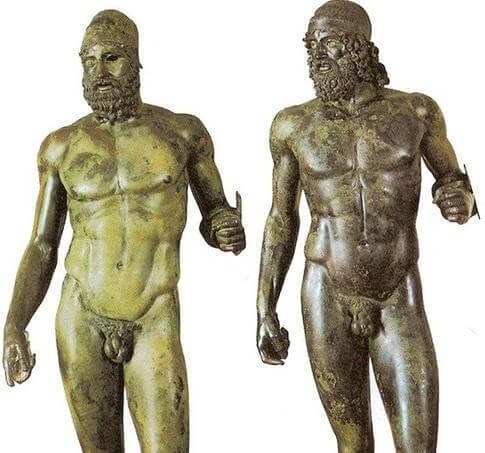
Even the separately manufactured, hammered-applied pinked colored nipples (not made from copper, but from a small amount of lead) are intriguing.
The ability to display the beauty of the human body while being naked is thought to be a crucial component of both “virtue” and one’s capacity for moral and intellectual development.
Due to the fact that athletes played naked and received hero’s honors in the event of victory, being naked was the ideal way to represent divinities, heroes, and also athletes.
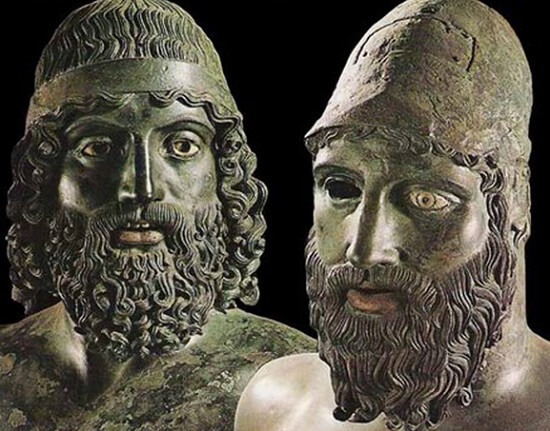
Head of the “A” statue. The hair on the head is held back by a wide band and has a finely defined shave with strongly plastic sinuous wisps.
The long wisp of waved hair that covers the entire scalp and falls into curled wisps on the shoulders leads us to believe that the head was originally helmetless; on top, there is a hollow that may be for a meniscus as well as a practical bronzed tip to deter birds from landing on the statues.
Nevertheless, a Corinthian helmet was positioned a second time, as indicated by standing signs, and the original hollow was changed into an inlet for the same helmet. At that time, applied wisps covered the nicely shaped ears.
The mouth has copper-colored lips and an upper row of five silver-foil-shaped teeth.
The eyes have ivory corneas and bronzed foiled lashes, while the iris, which was not preserved, was likely made of a precious stone or glassed pasta.
The bronze A would stand in for Tideus, who was so ferocious that he bit his foe and ate his brain (hence the silver teeth that could be seen);
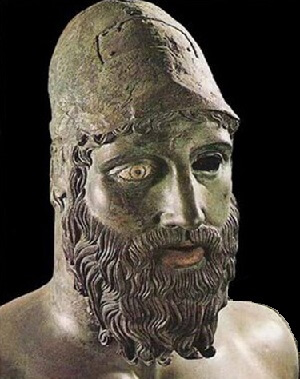
Head of the “B” statue. We can see some plate cats, covered by light hammering and the sulk on the sides of the shave the lower side of the throat; the head is smooth and deformed, likely as a result of the raised Corinthian helmet, and covered by a leather or felt cap.
Lower lobes of the ears and wisps of hair that resembled those from a recent shave but were plastic in nature emerged from the cap.
We only have the right eye, which has the white-marbled cornea, the iris, which is made up of a whitish ring and a pinkish one, and the black eye pupil. Even the mouth has the copper-colored lips.
Anfiarao, who predicted his own demise thanks to his prophetic spirit (remembered by the cap worn by seers), would be the Bronze B.
Other elements differentiate them.
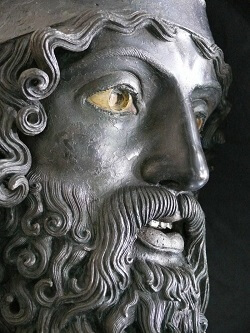
In addition to having a different face, hairstyle, and beard, statue B has a significantly displaced right hip, which places it in the generation immediately succeeding statue A.
The head, the thorax, the arms (divided into three sectors), the hands, the legs, the feet, and the medium-sized fingers on the feet have all been separately cast and then welded together to create the Bronzi.
According to a widely held belief, two sculptors from various historical eras created the Bronzi.
The theory that they were created in Attica, in the environment of Phydia, the creator of the sculptures that decorate the famous Parthenon of Athens, is confirmed.
The A statue was created around the middle of the 5th century B.C., while the B statue, with its new artistic sensibility and Polycletus as its primary creator, was created 30 years later.
Their shared stance, the similarity of the metal alloys used, the fusion process, and the skill demonstrated in the metal inlay used for specific touches (the areolas, lips, and teeth) all point us in the direction of their origins and original intent.
How else could we account for these traits continuing for about 30 years?
This is especially true given that these 30 years fall during the fifth century’s richest, most vibrant, and most innovative period. BC in the era of Phidias and the enormous Parthenon workshop, surrounded by a classical environment.
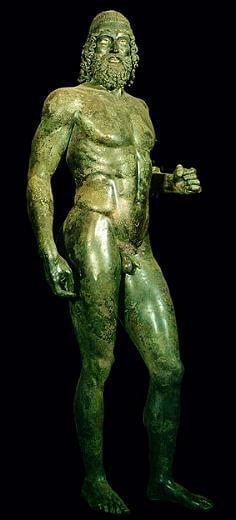
The two bronze statues were likely commemorative offerings, erected by the winners of the “oplitodromies” (races between athletes in heavy armour introduced in Athens in 520 BC and continued until Hellenistic times). Experts have not reached a final unanimous agreement on this, but it is very likely.
The fame that these race winners attained persisted for as long as their monuments.

ILOVEYOU Virus, the worst computer virus of all time
The ILOVEYOU Virus, also known as Love Letter for You or Love Bug, had a high infection rate due to its ability to spread itself by copying entries from users' email address books. It is a virus that was created in 2000 by a college student in Manilla, Philippines, and was recognized by the Guinness Book of World Records as the worst computer virus of all time, causing more damage than anything before it.

A story of a man Survived Inside Sunken Ship For Three Days
A man survived a sunken ship for nearly three days, 279 feet underwater and in complete darkness, while listening to fish eat the bodies of his shipmates.

A man joins a search operation without realizing he is the missing person
Beyhan Mutlu, a Turkish national, was reported missing by local media and unintentionally joined search teams looking for himself in a forest. He was drunk and lost in the woods when he ended up in a group with others looking for himself.

A Pilot Survived 20 Minutes Outside A Flying Jet
In 1990, the captain of flight 5390 Timothy Lancaster got sucked out of his own plane when the window of the plane fell off. The crew held the captain’s leg for 30 minutes while the plane performed emergency landing. Everyone survived.

Why Is the N Lowercase in 7-Eleven?
7-ELEVEN is thought to have a lowercase "n" in its logo because the company president's wife believed that a logo with all caps would seem harsh, while a lowercase "n" would make it more graceful.

Unique Dining table with a hole for your cat to peek and join you dinner.
Dinos, a Japanese internet shop, has launched a new range of cat furniture, which includes this oak table with a hole in the middle and a perch underneath. It places your cat companion in the center of the table, making your cat the main focus of your meal, as it should be, because cats are the true proprietors of “your” home.

stranded hikers rescued by a life-saving iPhone feature
Stranded hikers were rescued by a life-saving iPhone feature that an awful lot of folks don't know a lot about.

Elvita Adams jumps from the Empire State Building and amazingly survived
Elvita Adams once tried to commit suicide by jumping off the empire state building. She Jumped from the 86th floor but was blown back to 85th floor by a strong gust of wind.

Smart girl saves her family more than 100 people in 2004 tsunami
In 2004, a 10-year-old girl saved her family and 100 other tourists from the Asian tsunami because she had learned about the giant waves in a geography lesson, it has emerged.

The Man Who Survived Falling Through a Thunderstorm, William Rankin
William Rankin was a fighter pilot who survived an ejection into a thunderstorm. He suffered frostbite, violent wind and lightning, severe decompression, and nearly drowned from breathing in rain water. He was in the cloud for over 40 minutes in total.

People are freaked out because they keep finding 'help me' messages under the cap of Sobe bottles
With their bottle caps that said, "Help me, I'm trapped in SoBe factory," SoBe Beverage discovered the hard way that forced labor is serious business. This is an example of when humor can be overdone.

Passenger with No Flying Experience Lands Plane in Florida: A Real-Life Aviation Miracle
A passenger with no flying experience landed a twin-engine plane in Florida after the pilot died mid-flight. With guidance from air traffic control, he safely touched down—a real-life aviation miracle caught on radar and radio.

Longest burning light bulb, The centennial light bulb in livermore, California
The world's longest lasting light bulb holds the Guinness World Record, and has been illuminating local fire stations in Livermore, California since 1901, the year Queen Victoria died.

A flight attendant uses a secret note to save a teen girl from sex trafficking
The flight attendant Shelia Fredrick. She spotted a distressed girl with an older man. She left a note in the restroom on which the victim wrote that she needed some help. The girl was rescued from a human trafficker after the authorities were informed.

A man who was saved from committing suicide 16 years ago now assists people dealing with mental health issues
Kevin Berthia traveled to the Golden Gate Bridge in 2005 to commit suicide. He ended up spending 92 minutes on the edge of the bridge talking to officer Kevin Briggs about his life. In much better circumstances, they cross paths at the same bridge ten years later.

Mom hears son's heartbeat 3 years after his death when she meets organ recipient
She agreed to donate her son's organs after his sudden death in June 2013 at the age of 7 months. The grieving mother was able to listen to her late son’s heart beating inside the little girl who received the organ after his death.

Woman survives skydiving accident, discovers she's pregnant
2005, a woman performing her first solo skydive jump survived a parachute malfunction which caused her to slam face first into a parking lot at 50 MPH. During surgery doctors discovered she was pregnant. She made a full recovery and the baby was fine.

How Being Bugs Bunny Helped This Voice Actor Out of Coma
Mel Blanc; the voice of Bugs Bunny, had been in a serious car accident that put him in a coma. After many unsuccessful attempts to get him to talk, a doctor asked “Bugs, can you hear me” Mel responded in the voice of bugs bunny, “Whats up, Doc? The doctors used this to lead him out of his coma.

'Press Your Luck' Was Hacked in 1984 by an Ice Cream Man
in 1984 an contestant made it onto the game show Press Your Luck. He discovered using his stop-motion VCR that the presumed random patterns of the game board were not random and memorized the sequences. On the game he was on, he won 45 consecutive spins. winning $110,237 in cash & prizes.

Restaurant owner offers burglar a job rather than filing charges
On April 13, 2021, Diablo’s Southwest Grill was robbed, but instead of pressing charges, owner Carl Wallace decided to offer the burglar a job in his business and said “There are better opportunities out there than this path you’ve chosen,”.

Paramedic Rescues Doctor Who Saved Him 30 Years Earlier
In 1981, a doctor helped save the life of a 3.2 pounds premature baby boy. Thirty years later, the boy, who had grown up to be a firefighter-paramedic, helped in saving the same doctor from a car accident.

Estonians save a wolf from the ice by mistaking it for a dog
Two young construction workers in Estonia discovered what they thought was a dog caught in a frozen lake. They carried it to their car and brought him to an animal shelter, not realizing it was a wolf.

The Inspiring Journey of Francis Tsai, Marvel Comics artist diagnosed with ALS
Francis Tsai, an American illustrator and conceptual artist who worked for Marvel Comics, was diagnosed with ALS in 2010. After he lost the ability to move his hands and arms, he started painting digitally on his cellphone with his right big toe. After he could not move his feet anymore, he began using eye-gaze technology to keep drawing.

Photos: This man sold everything 45 years ago to buy a bike and travel 6,000 miles from India to Sweden to see his love.
An Indian man traveled from India to Sweden on a bicycle to meet his Swedish wife in 1978. The journey took him 4 months and through eight countries.

Before Hollywood, Christopher Walken Was a Teenage Lion Tamer with a Lioness Named Sheba
Before acting, Christopher Walken worked as a lion tamer in a circus at age 16. He performed with a lioness named Sheba and described the job as surprisingly calm—just another day before Hollywood stardom.


